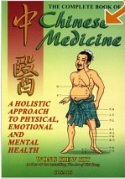An Overview of
Traditional Chinese Medicine
Summary
Traditional Chinese Medicine, often commonly referred to as TCM, is a system of healing rooted in the beliefs and
traditions of Oriental medicine. In TCM, the body is viewed as a delicate complex of systems that must all be kept
in balance for the body to remain healthy. TCM uses a wide variety of techniques to maintain this balance,
including herbal medicine, acupuncture, meditation, massage, mental and physical disciplines such as Tai Chi and
yoga, and nutritional therapy.
While TCM is regarded as an alternative medicine system in the West, in China and other Oriental countries, it's
an integral part of conventional medicine. Medical practitioners are trained in the diagnostic and healing
techniques with centuries of tradition and philosophy. Like naturopathy, TCM is a holistic philosophy that takes
all of the body’s systems into account, including physical, nutritional, emotional, mental, spiritual and social
aspects of a person’s life.

Theory
Theory in TCM is based on the balance of opposing elements in the body, and their harmony both within the body and
with the environment around it. The two main forces of yin and yang combine to form the qi (also called the chi,
pronounced ‘chee’), or vital life force. In the TCM view, disease arises from imbalances of yin and yang that block
the proper flow of qi. Therapies aim at restoring the balance and unblocking the flow to restore health.
While much of the philosophy behind TCM sounds unscientific to Western minds, there are some sound scientific
principles at work. In fact, many of the commonly prescribed treatments are similar to those prescribed by Western
conventional medicine. For instance, a doctor may determine that abdominal pain is due to an imbalance of ‘hot’ in
the body, and prescribe a diet that emphasizes ‘cool’ foods – a bland diet of the type that’s often prescribed for
patients with stomach ulcers.
TCM aims at being non-invasive, and practitioners will attempt to realign the body’s balance using nutrition,
massage, manipulation and acupuncture before prescribing medicine or surgery.
The Evidence In Favor
Most research into the effectiveness of TCM has been conducted around acupuncture, which is one of the more widely
used forms of alternative medicine in the Western world. Research using double blind studies into acupuncture are
challenging, since it’s difficult to create a sham acupuncture treatment as a placebo, but the results of
large-scale studies are sufficiently convincing that the FDA considers the tradition ‘promising’ and worthy of
further study.
In addition, it's been proven that many herbs used in Chinese medicine have a biological effect, and that
massage and physical manipulation therapies work to relieve pain by manipulating the muscles, nerves and
tendons.
The Criticisms of TCM
The main criticisms of TCM are the following:
TCM methodologies are largely untested in Western Medicine.
Much of the philosophy and reasoning behind TCM is based on 'magical thought,' such as powdered tiger bone is
considered an energy supplement because tigers are energetic animals. In Western thought, this is insufficient
basis to even begin research.
Some of the herbs used in Chinese herbal medicine can be dangerous, as ephedra proved.
Even when the herbs themselves are not dangerous, the lack of regulation of herbal production and sale can
introduce contamination and unsafe ingredients into herbs imported for use in medical and supplementary
treatments.
| 
